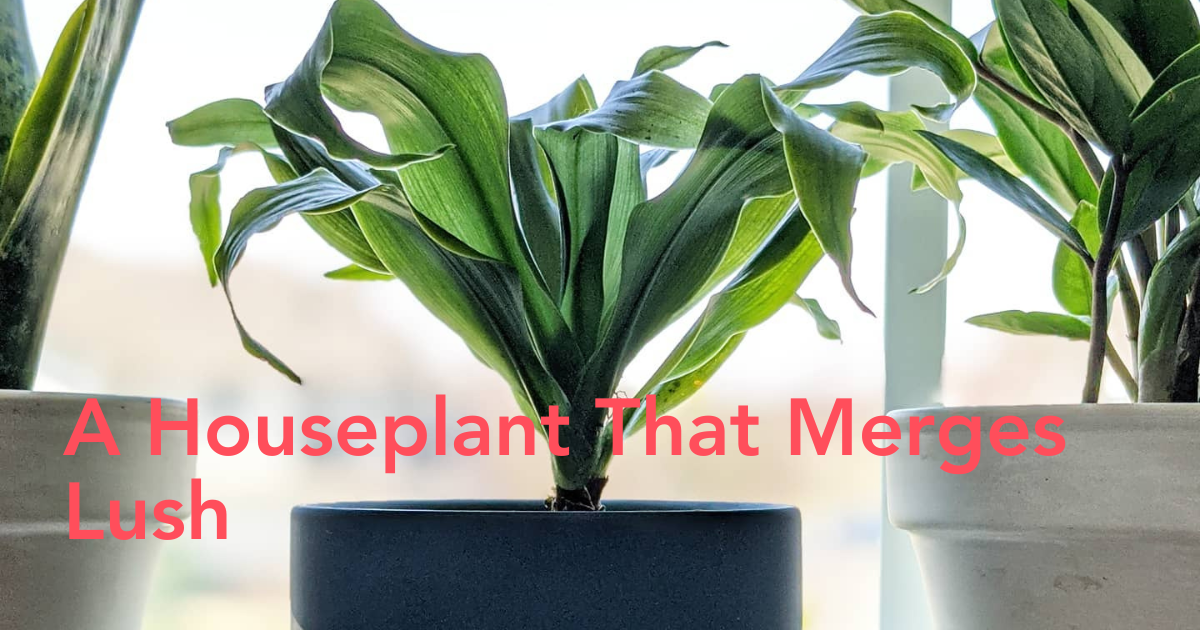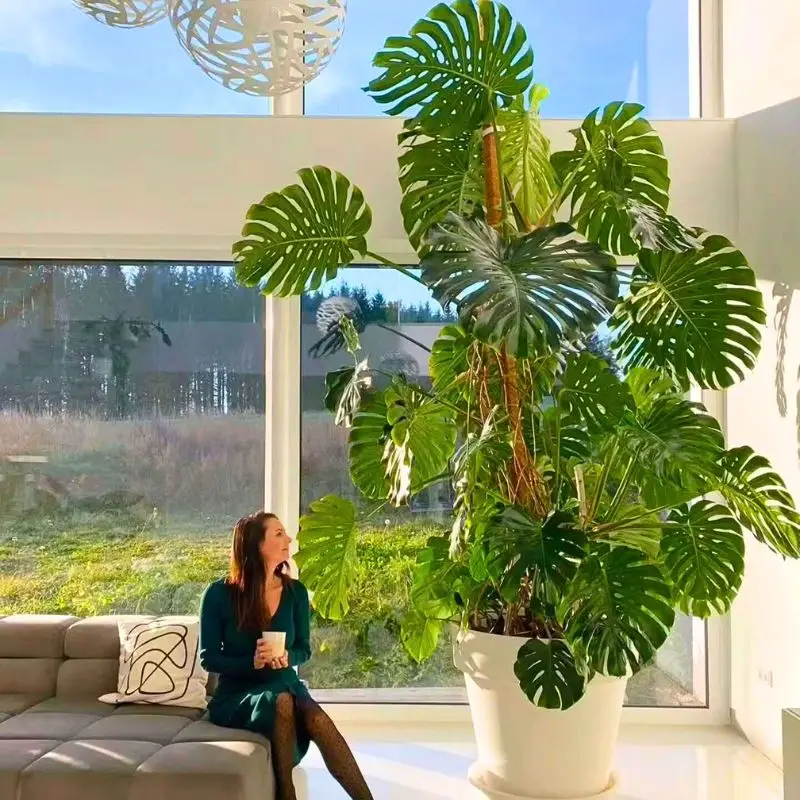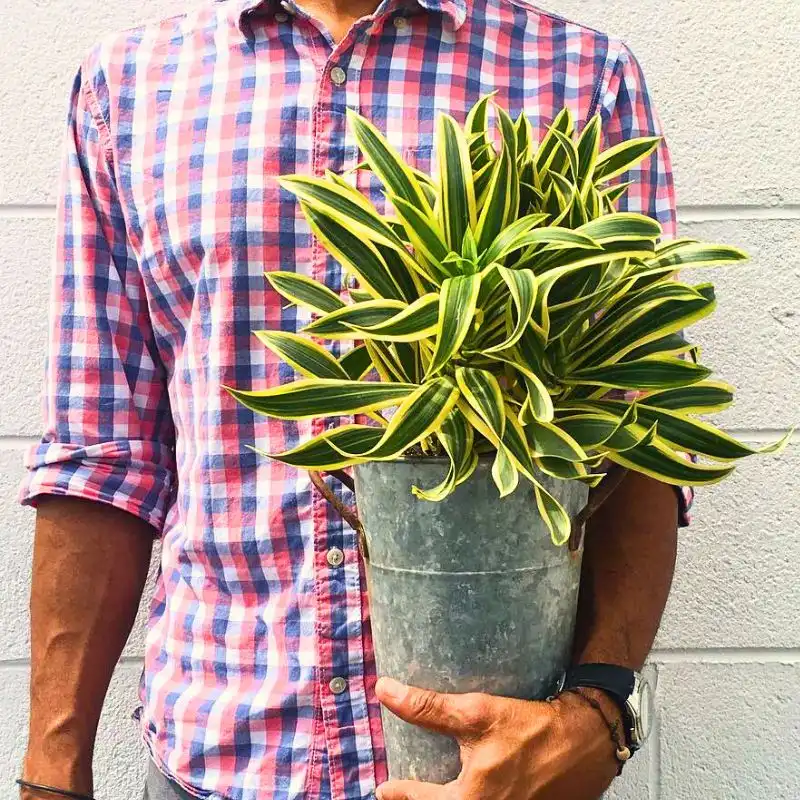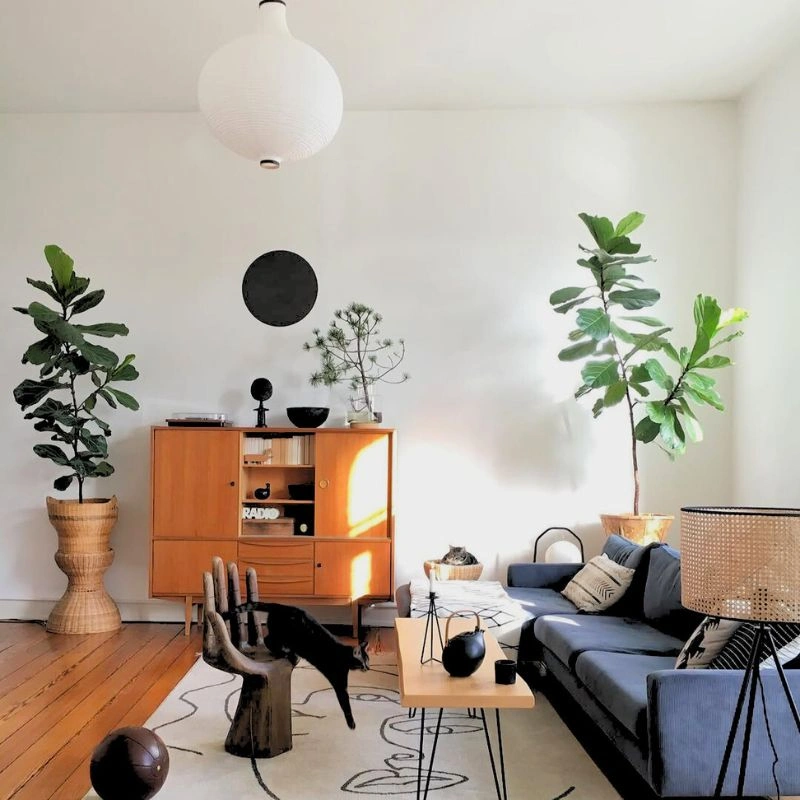If you're searching for a houseplant that merges lush, captivating foliage with near-effortless care, look no further than the Dracaena Janet Craig. Adored for its deep, glossy leaves and extraordinary resilience, this indoor favorite remains a top choice for both avid hobbyists and first-time plant enthusiasts.
Whether nestled in a cozy apartment corner or showcased in a grand office lobby, the Dracaena Janet Craig adds a stately presence without demanding constant upkeep. Renowned for tolerating minimal light and infrequent watering, it quickly adapts to most indoor climates—a living testament to nature's adaptability. Let's dive into its storied origins, best care practices, common troubleshooting, and more. Prepare to discover why the Janet Craig plant has captured countless hearts around the globe.
A Historical Look at Dracaena Janet Craig
The Dracaena Janet Craig descends from a broader group of Dracaena plants that are native to tropical Africa. Scientifically, it is sometimes referred to as Dracaena fragrans Compacta or, historically, Dracaena deremensis. The cultivar 'Janet Craig' is said to date back to the 1930s, named in honor of the daughter of nurseryman Robert Craig of Philadelphia. Over time, the name 'Janet Craig' became synonymous with ease of care and remarkable durability.

Horticultural records suggest that the Janet Craig plant is a variant of the Dracaena 'Warneckii' line. Cultivators quickly discovered its enduring qualities: it tolerates low humidity, rarely needs attention, and remains vibrant under artificial or indirect lighting. By the mid-20th century, Janet Craig firmly established itself as a mainstay in homes, offices, and any spaces craving a low-maintenance splash of green. The plant's history is thus one of both humble practicality and indoor-gardening elegance.
Recognizing the Beauty of Dracaena Janet Craig
An iconic feature of the Dracaena Janet Craig is its gently arching, deep, and dark green leaves. These broad leaves emerge from a robust central stalk and can extend a couple of feet in length, giving the plant a stately, tree-like appearance over time. Classified among slow growers, the Dracaena Janet Craig plant can adapt to a variety of indoor arrangements, ranging from compact, table-friendly forms to taller, elegant floor displays.

Whether you prefer a bushier shape or a single upright cane, careful pruning ensures that your Janet Craig stands out as a focal point without overtaking your indoor space. The plant's refined silhouette, coupled with its resilience, makes it a favorite among enthusiasts seeking a showpiece that is forgiving of occasional neglect. The Dracaena Janet Craig perfectly balances lush visuals with a minimal-fuss disposition.
Understanding Light Requirements and Ideal Temperatures for Janet Craig Plants
When grown indoors, the Dracaena Janet Craig benefits most from filtered light or bright indirect light. However, it is exceptionally tolerant and will still cope admirably with low light or more shaded conditions. Direct sun can cause leaf scorching, so aim for indirect sunlight when possible. If your home has limited natural sunlight, let this houseplant's ability to adapt to low-light environments keep it healthy, albeit at a slower growth rate.

In terms of temperature, a range of 16°C to 24°C (65°F-80°F) ensures the Dracaena Janet Craig remains comfortable. Rapid fluctuations or exposure to cold drafts can trigger leaf drop or yellowing. Keeping the plant away from heating or cooling vents is wise because consistent indoor temperatures support stable growth. Moderate indoor humidity also helps preserve the leaves' sheen, though the plant can manage in average household humidity if regular misting is inconvenient.
Watering Wisdom - Striking the Right Balance for the Janet Craig
The Dracaena Janet Craig is famously easygoing, thanks to its minimal thirst. It does not require frequent watering, so most owners find that a thorough soak every 7 to 10 days will suffice. Always allow the upper portion of the soil to dry before the next watering to reduce the risk of over-saturation and root rot. Standing water in the pot is the leading cause of dead or rotting roots, a problem that can quickly stunt or kill your plant if unchecked. You might also want to check out this article on 10 of the most resilient plants that are impossible to kill.
Pay attention to water quality, as tap water containing chlorine or fluoride may cause leaf-tip burn. Distilled or filtered water is a safer alternative. Should the foliage begin to show browning edges, it might signal a buildup of salts or minerals in the soil. Meanwhile, drooping plant leaves can indicate underwatering, while limp or yellow foliage often points to excess moisture. With a small dose of attentiveness, your Dracaena Janet Craig will thrive despite a busy schedule.
Selecting the Right Soil and Fertilizing Routine for Dracaena Janet Craig
Always choose a well-draining potting mix for the Dracaena Janet Craig. A blend incorporating peat-based substrates or a standard houseplant soil, plus perlite, helps keep water from pooling around the roots. Good drainage is particularly important because prolonged wetness leads to rotting roots and eventual decline of the plant. Let the soil aerate between waterings, ensuring oxygen reaches below the surface.

Regarding feeding, the Dracaena Janet Craig does not demand intense fertilization. Use an all-purpose fertilizer at half the recommended strength during summer months and in spring. If you fertilize monthly or every six weeks, you are already doing more than enough. Overdoing plant food can result in salt buildup and leaf-tip burn. Keep the regimen mild, and your foliage will remain healthy and vibrant.
Pruning Best Practices and Simple Propagation Methods for Dracaena Janet Craig
Tending to diseased leaves or browning leaf tips with sterile pruners helps maintain a lush appearance for your Dracaena Janet Craig. If the plant grows too tall, trim back the central stalk at the desired height; new growth will emerge just below the cut. This approach to pruning encourages a bushier, more compact silhouette if that suits your aesthetic.
Propagation is equally straightforward. In early spring, make a diagonal cut below a node on a healthy stalk, removing a few of the lower leaves to expose a small section of bare stem. Place the cutting in a glass jar of water to encourage roots to form, or plant it directly into lightly moistened soil if your environment is warm and stable. Within a few weeks, you should see evidence of rooting and brand-new growth, offering you an easy way to expand or gift a 'clone' of your favorite Janet Craig.
The Art of Repotting Dracaena Janet Craig
Since Dracaena Janet Craig is a slow grower, frequent repotting is unnecessary. However, once you spot roots peeking from the drainage holes or the plant appears stunted, it's time to repot. The optimal seasons to repot are spring or the summer months, allowing the plant to recover quickly while actively growing.

Choose a pot just a size or two bigger than the current one, ensuring it's slightly deeper but not excessively large. Begin by placing a layer of fresh mix at the bottom, then gently remove the plant from its existing container, checking for any rotten or dead roots that can be trimmed off. Position the root ball in the new pot and add more soil around it, watering thoroughly so that the soil settles properly. If necessary, top up the soil once the initial watering drains through. This gentle process provides your Dracaena Janet with the right amount of space to continue healthy development.
Common Concerns, Pitfalls, and Troubleshooting for Dracaena Janet Craig
Despite being robust, the Dracaena Janet Craig can sometimes fall prey to pests or environmental stressors. A pest like mealybugs, scale, or spider mites may appear, typically on leaf undersides. Isolate an affected plant immediately and treat it with insecticidal soap or neem oil. Overwatering is another classic pitfall, leading to root rot if the potting medium stays saturated. Ensuring good drainage and watering only when necessary remains the best defense.

Watch for leaf-tip browning, which might be caused by salt and chemical buildup in the soil due to low-quality water. If leaves suddenly droop, check if you have been too sparse with watering. Conversely, if they turn yellow, confirm you haven't drowned the roots. Another occasional issue is that the lower leaves naturally shed as the trunk becomes more defined. This is simply part of the plant's maturing process.
How to Encourage Bloom and Seasonal Cycles in Dracaena Janet Craig
Indoor Dracaena Janet Plants rarely bloom, but there are exceptions. Under stable conditions, including mild indirect sunlight or filtered light, some individuals manage to produce tall stalks of fragrant white blossoms. Maintaining consistent temperature and humidity, plus giving modest fertilizer in spring or the summer months, may help trigger flowering.

Seasonal changes do matter. In fall and winter, you might notice slowed growth, prompting a slight decrease in watering frequency. Conversely, come springtime, resume a somewhat heavier watering strength to invigorate new leaves. These seasonal cycles are subtle, but following them enhances the general well-being of your Janet Craig.
Placement Ideas for Dracaena Janet Craig and Its Companion Plants
Because it handles low light gracefully, the Dracaena Janet Craig fits effortlessly into darker corners or hallways where other species may struggle. Conversely, if you have a space offering bright indirect light, you can expect a livelier growth pace. Avoid direct sun to prevent scorching, but do not worry if the plant only receives filtered light. Both setups are acceptable.

Pairing the Janet Craig with other easy-care species like pothos or Chinese Evergreen creates an appealing arrangement for those who want an indoor 'jungle' feel. However, keep in mind that dracaenas are not fully pet-friendly, so consider placing them where curious pets cannot chew the leaves. By combining plants with similar lighting and watering needs, you simplify your routine and ensure each member of your collection thrives in harmony.
Additional Care Tips for Your Dracaena Janet Craig
Regularly monitoring soil moisture remains the cornerstone of proper care. You want to water only when the top portion of the soil becomes dry, thus protecting against oversaturation and root rot. If your home tends to be on the dry side, misting the leaves or using a tray of pebbles and water may help maintain moderate humidity. Occasional dusting of the leaves also promotes efficient photosynthesis.

During spring and summer, fertilize at half the recommended strength if you notice browning edges or tips, flush the soil to eliminate salt accumulations, or switch to distilled water. Meanwhile, if the plant naturally discards a few bottom leaves as it grows taller, do not worry; the trunk is simply evolving to display a more tree-like form.
The Joy of Sharing Dracaena Janet Craig
Many enthusiasts love presenting a Dracaena Janet Craig as a gift, especially to friends or family new to indoor gardening. Its reputation as a low-maintenance houseplant ensures that novices can quickly learn basic plant care without feeling overwhelmed. Dressing the plant in a decorative pot, along with a succinct care note, creates a thoughtful surprise. Beyond aesthetics, certain NASA studies highlighted that dracaena species help remove indoor toxins, adding perceived health benefits to the plant's visual charm.

For an even more personal touch, a simple cutting from your own Janet Craig can be rooted and gift-wrapped, symbolizing a piece of your own thriving greenery passed on to someone else. It becomes a testament to nature's resilience and a gentle nudge to the oasis. As a living token of kindness, the Dracaena Janet Craig rarely disappoints.
Speaking of oases, here's an interesting read on the Huacachina - Peru's natural desert oasis.
Celebrating the Dracaena Janet Craig Legacy
By now, you have explored the Dracaena Janet Craig from its historical beginnings to its steadfast adaptability in modern settings. This plant exemplifies everything we cherish about houseplants - uncomplicated care, striking foliage, and a readiness to flourish even under less-than-ideal conditions. Whether you call it Dracaena Janet Craig or simply Janet Craig, it remains a tried-and-true companion for beginners and seasoned growers alike.

Providing it with regular yet moderate watering, a suitable well-draining potting mix, and stable indoor temperatures will keep the Janet Craig at peak health. If it grows too tall, a quick snip ensures new leaf production just below the cut, letting you shape the silhouette to match your preferences. Should you see signs of stress, such as drooping or discolored leaves, small adjustments to your watering routine or lighting can bring it back to life. Over the long term, a basic regimen of mild fertilization at half the recommended strength in summer and an occasional repot when roots become cramped is enough to support a thriving specimen.
Remember that the Janet Craig is not fully pet-friendly, as ingestion can be harmful to cats, dogs, or other curious animals. Keeping it on a shelf in your home with four-legged companions. Meanwhile, if you ever want to share a piece of your plant, propagate a cutting, and let someone else experience the subtle joy of growing a Dracaena Janet Craig. Such thoughtful gestures amplify the plant's legacy and foster a deeper appreciation for nature's quiet beauty.
Header Image by @deadplantclub, and Featured image by @poojaplants










